Cycling Recovery: Essential Tips for Post-Ride Rest
If you’ve ever felt like your legs are made of lead when you’re biking up a hill or you just don’t have the power that you know you actually do have, you might need to take a closer look at your cycling recovery strategy. Recovery is super important for cyclists, especially if you ride and…
If you’ve ever felt like your legs are made of lead when you’re biking up a hill or you just don’t have the power that you know you actually do have, you might need to take a closer look at your cycling recovery strategy.
Recovery is super important for cyclists, especially if you ride and lot and ride hard. Whether you’re a roadie, a mountain biker, a gravel cyclist, or you are an aficionado of all two-wheeled adventures, knowing what to do to post-ride can make a huge difference in you how far, hard, and often you ride. And who doesn’t want to ride farther, longer, and harder?
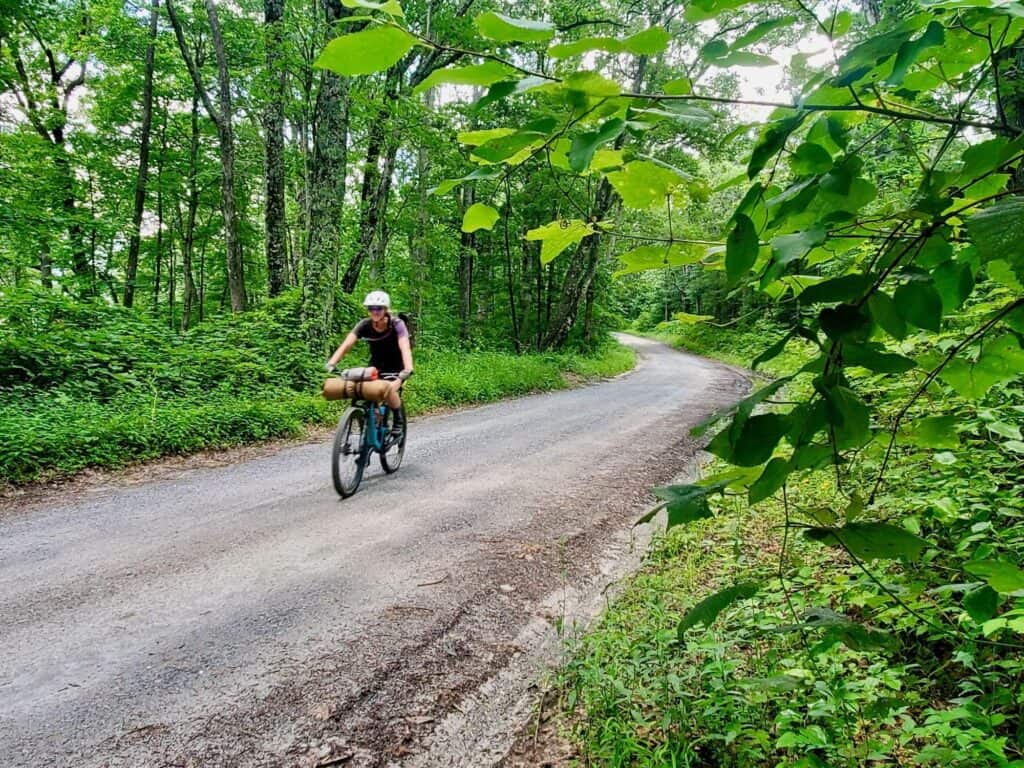
Need Help Planning Your Trip?
New to bikepacking? I’d love to help you plan your first (or next) overnight trip! Click the link below to set up a Q & A session.
Why is recovery important?
This may seem like a silly question, but it’s worth exploring because a lot of cyclists and athletes don’t give cycling recovery its due attention.
Moderate and intense exercise can put a lot of strain and stress on your body. Muscles actually tear and break down during long or vigorous rides and it’s during recovery times that these muscles repair, adapt, and grow so that you become a stronger rider.
If you don’t give yourself time to recover – whether that’s after a big ride or a week of moderate rides – then your body can’t keep up with all the repair and growth it needs to do.
If you’ve ever felt like you “don’t have the legs”, then you probably haven’t given yourself enough time to recover.
Proper cycling recovery is also essential for preventing sickness, injury, and overtraining.

Who needs to focus on cycling recovery?
If you’re reading this, you could probably benefit from putting some of these cycling recovery tips into practice. However, not everyone, or even every ride, warrants a recovery drink or an ice bath.
Here are a few flags that may indicate you should take cycling recovery a bit more seriously:
Like most things in life, there’s no one-size-fits-all when it comes to taking care of your body. But if you answered yes to some of the situations above, focusing a bit more on what happens off the bike might help you when you’re on the bike.
10 Cycling recovery tips
1. Fuel properly during your ride
You’ve probably heard the saying that once you’re thirsty, you’re already dehydrated.
The same is true with nutrition. Cycling recovery actually starts with properly fueling your body on your rides. Your muscles need a steady stream of glucose to function properly. We have sugar stores in our muscles – called glycogen – that get released into our bloodstream when our blood sugar starts to fall.
However!
Our glycogen stores are limited and depending on how fast and hard you ride, these sugar stores can get used up well before you roll back into your driveway. If you’ve ever bonked, it’s because your glycogen stores have been depleted.
If your glycogen stores are depleted, recovery is going to take longer.
So how do you avoid bonking and depleting these precious glycogen stores?
Eat carbs throughout your ride.
It’s recommended to eat one bar per hour of riding or sip on a high-carb electrolyte drink throughout your ride (I use Tailwind Endurance).
Be proactive in your cycling recovery time by fueling properly during your rides.
Related: Cycling Nutrition – How to Fuel Your Body for Top Performance

2. Take time to cool down
Another key part of cycling recovery is taking the time to cool down. If you played any sports in school, you probably remember the last 15 minutes of practice were reserved for cooling down.
This could mean slowing down to an easy spin for the last mile or getting off your bike to walk and stretch when you get back to the car or back home. Cooling down helps slowly decrease your heart rate and blood pressure back to resting ranges.
What you want to avoid is finishing your ride all hot and sweaty and then promptly sitting down and drinking a beer.
3. Immediately consume a cycling recovery drink
Recovery drinks are meant to be consumed as soon as possible after you finish your ride. Drinks, like my personal favorite Tailwind Recovery, are carefully formulated with a mix of protein, amino acids (the building blocks of proteins), carbs, and electrolytes.
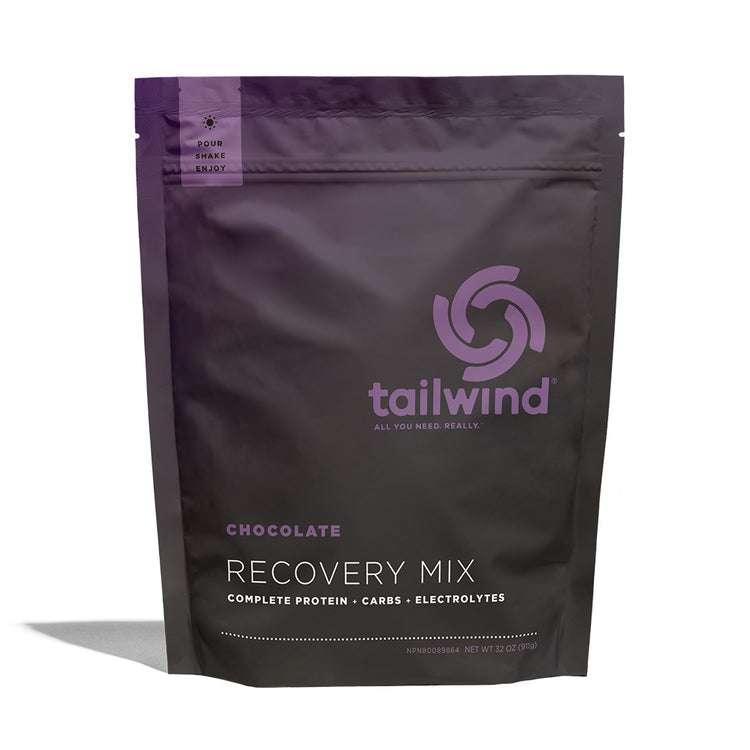
When you finish an intense workout or a ride, there is a short period of time that your body goes into hyperdrive for absorbing certain nutrients, particularly carbohydrates.
This window of time is around 30 minutes.
If you want to maximize nutrient uptake to replenish your glycogen stores and repair muscles, it’s best to either consume a recovery drink or have a snack high in protein and carbs immediately after you finish your ride.
4. Eat protein and carbs with all meals
In addition to consuming a recovery drink after your rides, it’s also important to focus on good, balanced nutrition with all (or most) of your meals.
If you count macros, getting enough carbs and protein will be easy since you’re tracking them.
If you don’t count macros (like me), you’ll need to put a little more thought into each meal and snack to make sure you’re getting enough carbs and protein.
As a reminder:
- Carbs are needed to build glycogen stores, which help keep you energized during rides
- Protein is needed for muscle growth and repair
Good carb + Protein snacks
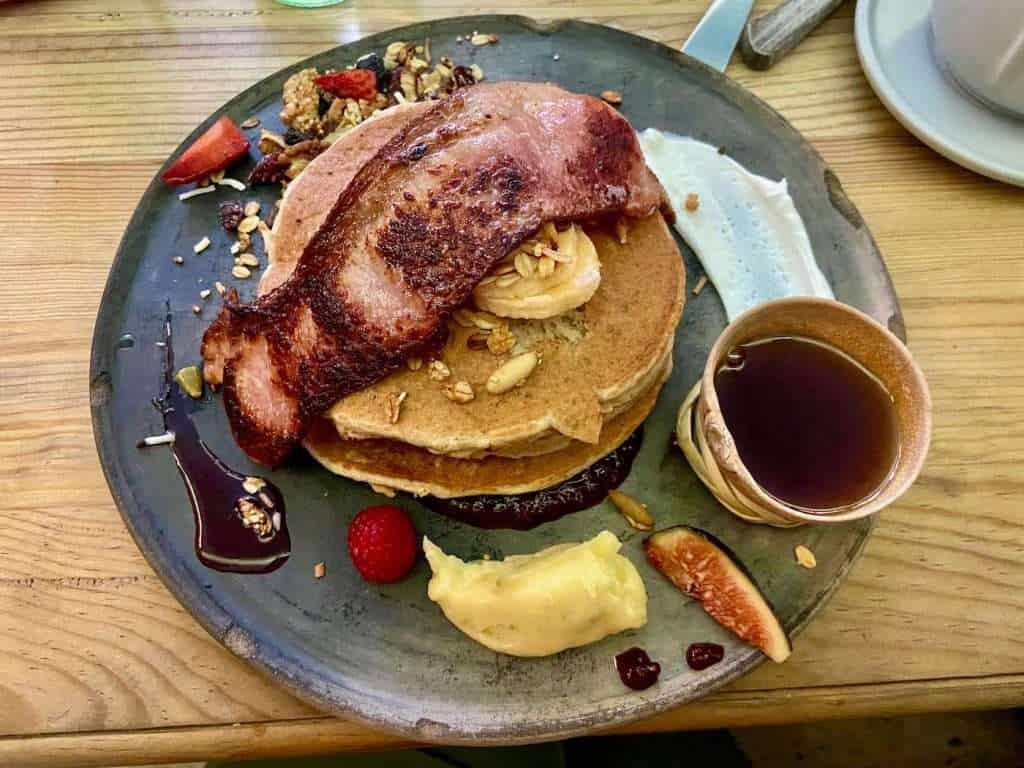
5. Stretch
I’m pretty sure I don’t have to tell you about the benefits of stretching. But if you need to hear it again, stretch!
Stretching or doing light yoga after rides and on rest days can really help with recovery, flexibility, and performance over time. Stretching regularly can even help prevent injury.
I use the app Down Dog, which allows you to customize your yoga and stretching sessions. You can generate classes that are as short as 8 minutes or as long as 90 minutes. You can also choose from a range of styles like restorative, flexibility flow, gentle, and more.
I highly recommend it if you want to get started with a stretching routine.
6. Hydrate
Did you know that muscles are 70-80% water? So it only makes sense that muscles need water for recovery. It’s really important to stay hydrated while you’re biking and then also drink plenty of water after you exercise.
How much water you need really depends on a lot of factors like muscle mass, gender, age, fitness levels, how much you sweat, length and intensity of your ride etc… etc…
A good ballpark amount to shoot for is:
- 1.2 to 2 liters of fluids per hour of exercise
- 24 ounces of water per pound of body weight lost during exercise. (If no body weight was lost, that means you did a good job hydrating throughout your ride and you should continue to drink water as normal).
If you’ve ever climbed on your bike the day after a big ride and your muscles feel heavy, there’s a good chance it’s because you didn’t drink enough water.
Related: The Best Mountain Bike Backpacks and Other Hydration Options for the Trail
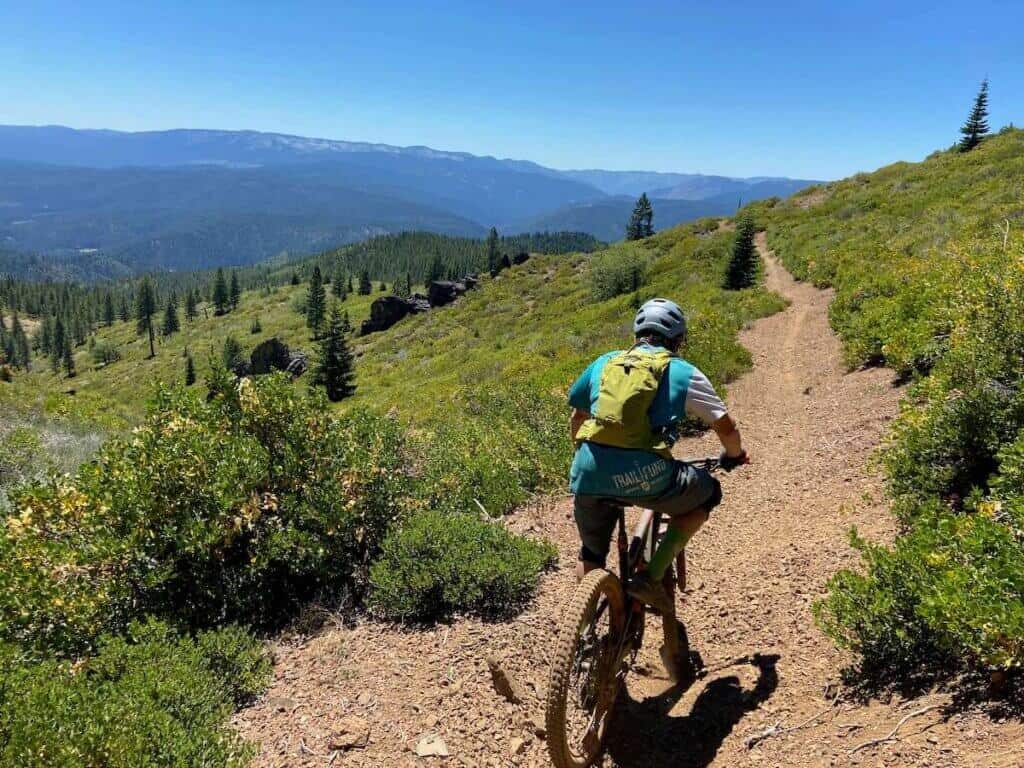
7. Try compression therapy
I have never tried compression therapy, but a lot of cyclists and athletes swear by it. The science behind compression therapy is that it helps increase blood circulation in the legs. Increased circulation aids in muscle recovery and reduced muscle soreness.
There are a number of studies that do show the benefits of compression therapy for athletes, so it could be something to look into if you want a speedier recovery.
(Note that not all compression devices or products have the same effect. For example, compression socks will most likely have a much lower effect than something like the NormaTec).
8. Self-massage (or book a professional massage!)
Massage is great for so many things like improving circulation, reducing muscle soreness, loosening tight muscles, lowering stress hormones (cortisol levels can increase with intense exercise), and so much more.
As a former massage therapist myself, I’m a huge proponent of both professional massages and self-massage devices. I have the TruMedic Neck and Back Massager and it’s magic. You can also use it on your calves, arms, and shoulders.
Another option for cycling recovery, which I don’t love as much, are percussion massage guns. These can target more specific muscles, but I don’t find them as enjoyable.
9. Get quality zzz’s
Sleep is so important for muscle growth and repair. While we sleep, our body goes to work on building and repairing tissues in our bodies. You’ll often hear professional athletes say that they try to get 8, 9, 10+ hours of sleep a day because they know how important it is for their recovery.
You may be saying, “I know this, but I’m not a good sleeper”.
Me either.
Here are some things I’ve found helpful to improve the quality of my sleep:
- Make sure my room is dark and cold. I sleep MUCH better in cooler temperatures.
- Use a white noise machine or have a fan on (one that doesn’t make any weird noises).
- Take 1-2 melatonin sleep gummies. I don’t use these every night, but when I know I need a good night’s sleep, I’ll use them. The Dream Water Sleep Gummies work really well for me.
- Don’t drink alcohol late at night. I’ve noticed a big difference in sleep when I have a glass of wine or two later in the evening. If you’re going to drink, try to keep it to before 5 or 6pm.
10. Take a rest day
Last, but definitely not least, make sure you’re taking some rest days if you tend to ride and do other workouts most days of the week. A rest day off the bike doesn’t mean an arm day in the gym.
A rest day is a rest day.
You can do light activities like going for a walk, but a rest day should really be a recovery day for your whole body.
Related posts you might enjoy
- Cycling Nutrition 101: How to fuel your body for top performance
- Best Mountain Biking Snacks
- Bikepacking Food: How to eat well on a bikepacking trip
What are your strategies for cycling recovery? Do you have any other tips to add to the list? Let us know in the comments!
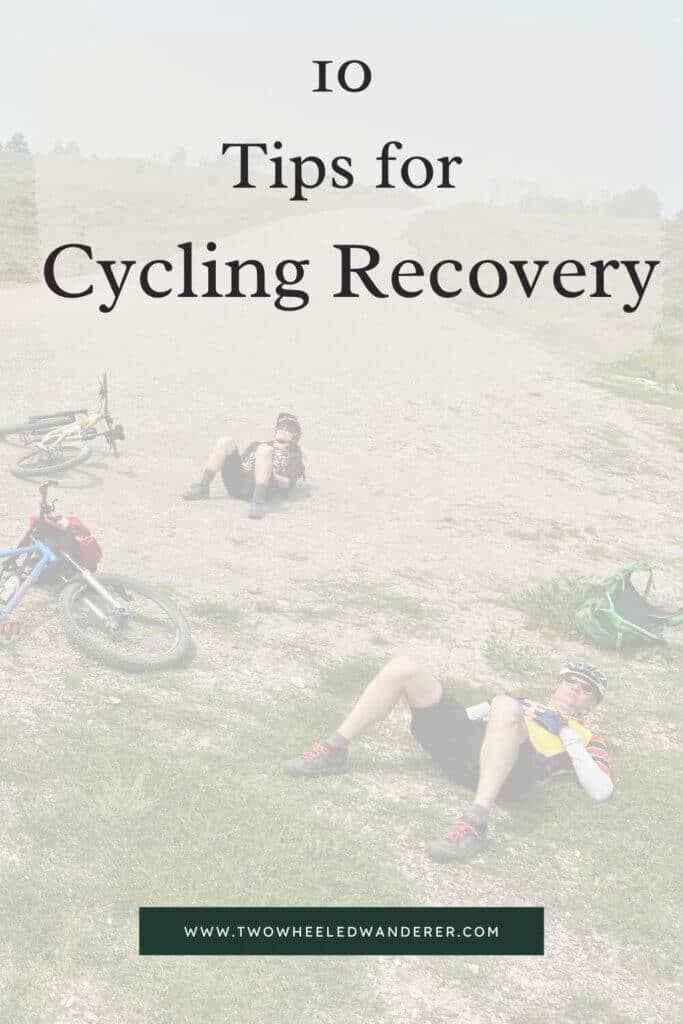





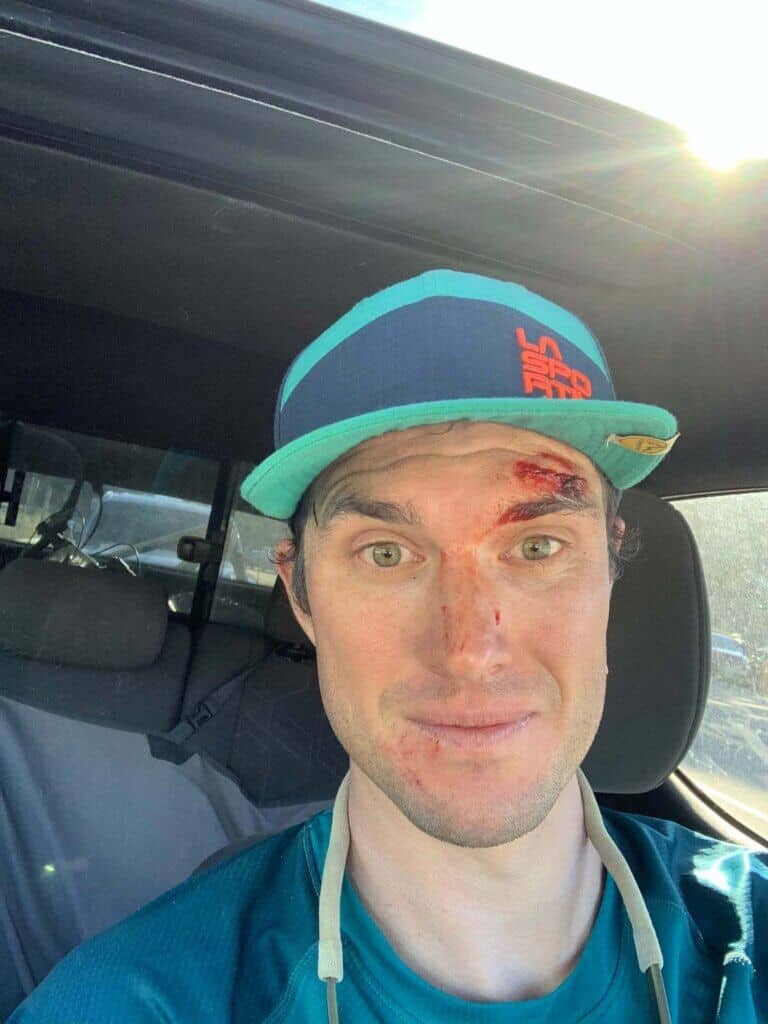

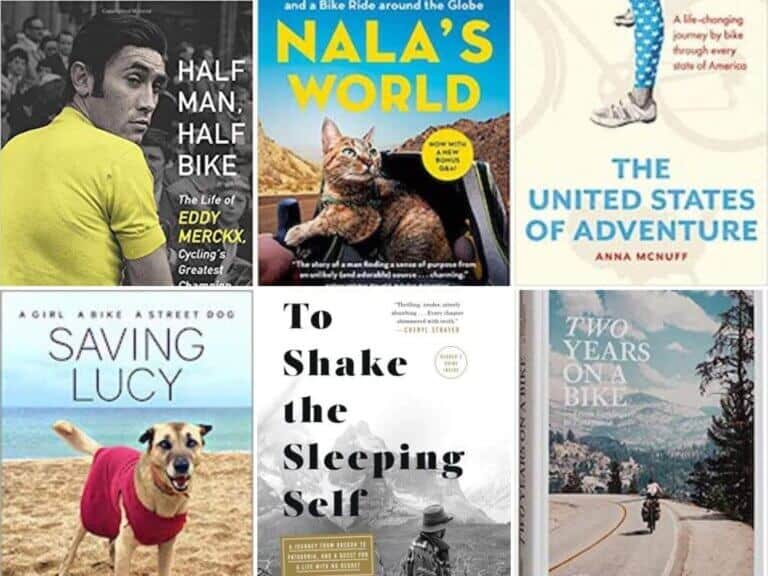
I love hearing from you and appreciate your comments! However, if you leave a rude, unconstructive, or spammy comment, it will be deleted. It’s cool to be kind. Have an awesome day!